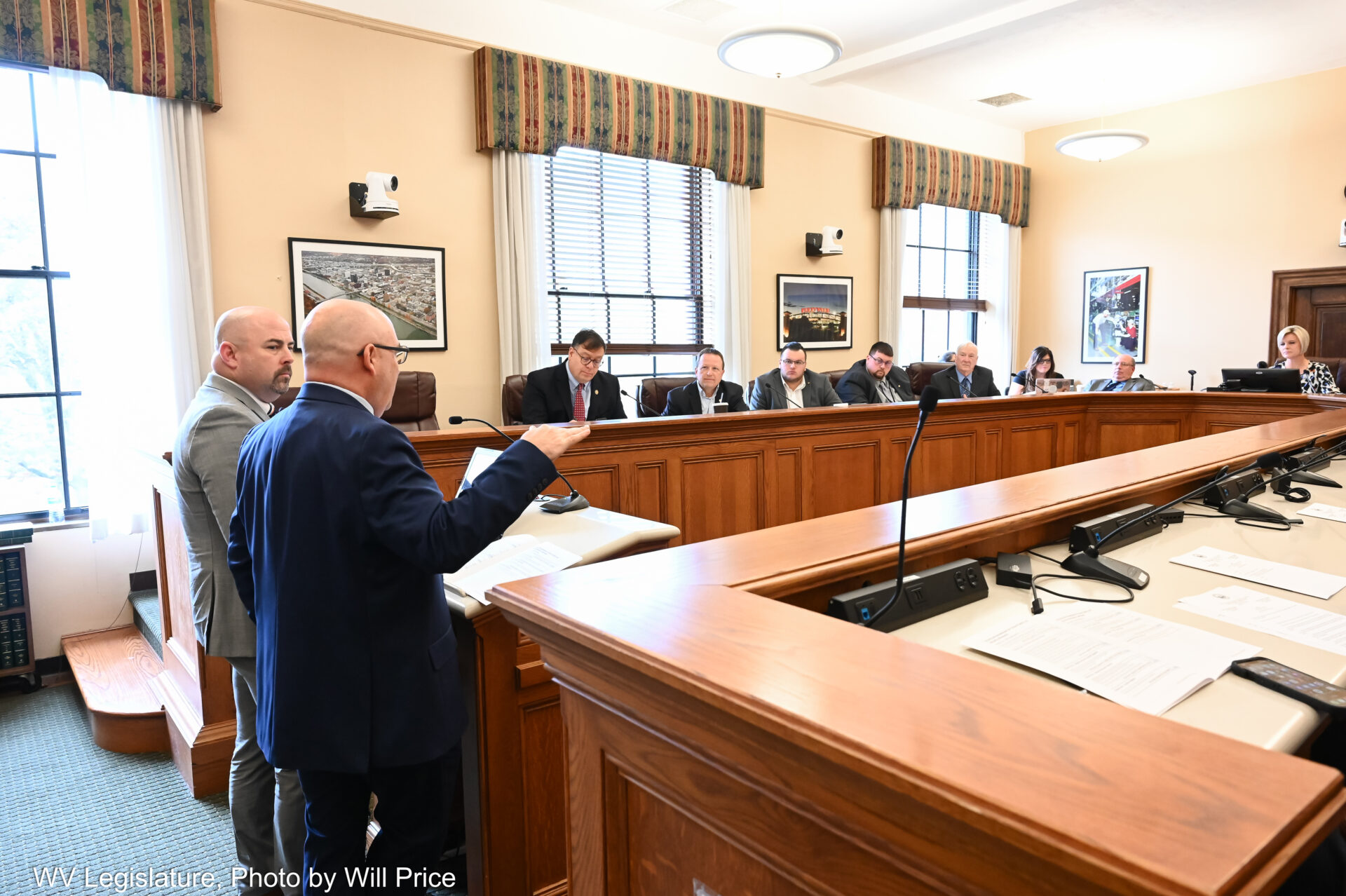Student safety continues to be a concern across the nation. In West Virginia, a rash of hundreds of hoax threats made against schools across the state earlier this fall has renewed conversations about the safety of, and preparedness of, aging school structures and dwindling budgets.
Lawmakers on the Legislative Oversight Commission on Education Accountability (LOCEA) met Sunday, Nov. 10 to receive the annual school facility safety and security report from the West Virginia Department of Education (WVDE).
The report is based on responses from county school districts, vocational centers and public charter schools regarding security measures that have been implemented and spent, as well as needs moving forward. The total request from all schools in the state for spending on security this year is close to $250 million.
Jonah Adkins, director of the Office of Safety & Tiered Support Systems, told the commission that much of that amount would be one-time expenses, and local school systems have spent more than $23 million to address school safety and security needs.
“We know that we would never be able to meet all this at once, but if we could chip away a little bit each year, I believe that we can make some good headway,” he said. “Our school districts are working with the resources that they do have available to them to address those needs as they arise, but obviously there is a greater need. It’s the unfortunate reality of our society that we live in, that we have people that are targeting children and targeting our schools to do bad things.”
Adkins told the commission that school entries are a top need because they are specified as the next distribution from the State Treasury’s special revenue fund, the “Safe Schools Fund”, after all public school facilities have been funded to meet special education video camera requirements.
Sen. Charles Clements, R-Wetzel, asked about the report listing 272 schools needing new entryways, or what he called “mantraps,” at an average cost of $319,000 per entry.
Micah Whitlow, director of the Office of School Facilities for WVDE, explained the number comes from the requests districts submitted as part of the report survey, professional estimates and the known cost of similar projects. He said a specific building’s needs can raise or lower the price significantly.
“We have a pretty good basis of knowledge that a mantrap is going to be in that $300 (thousand) to $500 (thousand) range,” he said. “Some of them could be super complicated and be a million, depending on the configuration and the age of the building. And some of them might be very simple and be maybe $100,000.”
Del. Joe Statler, R-Monongalia, expressed shock that so many schools were still without adequate security at their entrances, and pointed out that the legislature had allocated money for that specific security improvement several times.
“What is causing us to have so many at this point in the game that doesn’t have a safe entrance way?” he asked.
Whitlow replied that the number of schools needing to upgrade their entryways has decreased year to year, but the price is simply too high for some counties.
“Looking back at the previous reports, the number has been decreasing, it’s just expensive,” he said. “So it’s hard to pay for a whole lot of those, and especially if a county doesn’t have a levy or a bond or there’s extra ways of building things. It’s just been hard for them.”
Statler asked what the plan is to ensure the safety of students and staff in schools without “mantrap” entryways. Adkins replied that most schools have moved to restrict entry and exit from the building to one door, as outlined in their mandated Crisis Response Plan.
Del. Patrick Lucas, R-Cabell, asked about the implementation of weapons detection systems after a school administrator in Ohio was stabbed by a parent before being arrested in West Virginia in October.
“Can you comment on how successful the schools with weapon detection systems have been?” he asked. “Is it more of a deterrent, or are we actually catching people trying to bring weapons into the school?”
Adkins and LOCEA Co-Chair Sen. Amy Grady, R-Mason, commented that having someone to monitor and run a weapons detection system is often a barrier to implementation.
“I’ve had that conversation multiple times with with school personnel regarding, how do you if you have a high school with 1000 students, how are you going to get all those students through, through one metal detector, for example, and who’s who’s going to mind that, and who’s going to respond if they do find a weapon?” Adkins said.
Whitlow closed by providing more solid numbers on the declining need for new mantraps in schools. He said the number of schools without a mantrap is trending down from 327 in the 2021-22 school year, to 299 in the 2022-23 school year and 272 in this most recent report for the 2023-24 school year.
